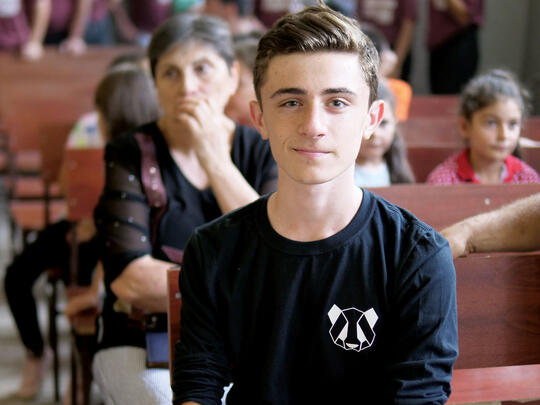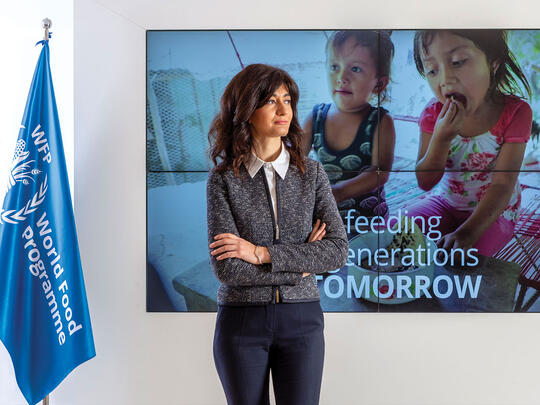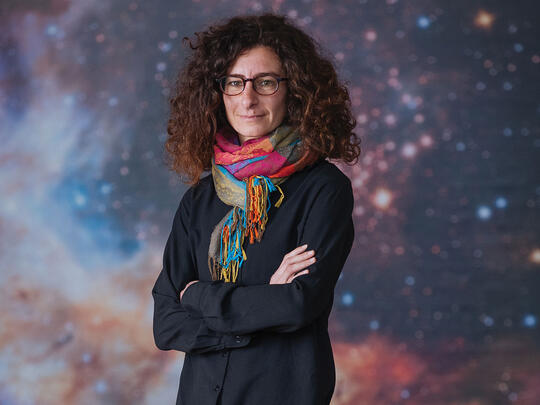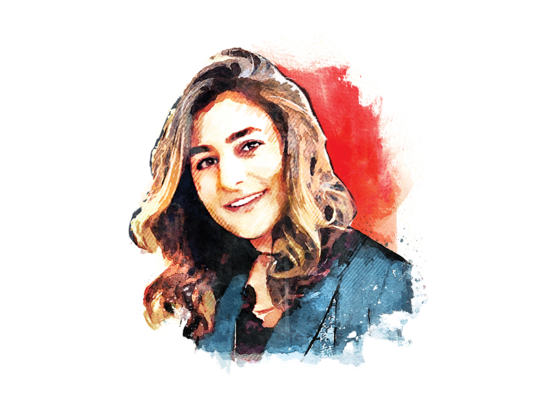Cell biologist Anita Kulukian is well acquainted with the stereotypical image of the research scientist: days of myopic solitude spent hunched over a microscope with beakers bubbling in the background. And while she has put in her time on the modern lab “bench,” where rows of white-coated, test-tube toting scientists squirt substances into banks of Petri dishes hoping to replicate results, Kulukian laughingly dispels the clichés associated with her field.
“Doing impactful research requires only the most transparent, collaborative environment. You’re constantly asking questions, exchanging new ideas, discussing results, and sharing insights among your team,” she explains. “Because we’re all playing a role in service to a mission, it’s the very opposite of solitary work. Science can’t move forward in a vacuum.”
After spending more than a decade conducting research in cell and molecular biology at many premiere academic institutions, the ebullient Kulukian moved to Seattle two years ago. There she leads a team at Seattle Genetics, focused on the development of a targeted drug designed to fight a specific and devastating type of disease: metastatic HER2-positive breast cancer.
Her company is one of many involved in the promising, cutting-edge field of targeted therapeutics, which hones in on specific cancer-promoting molecules. Targeted therapeutics are generally easier on the patient, as they allow for normal cells to be spared, unlike in standard chemotherapy. And while these therapies may still cause side effects, because the patients’ healthy cells are spared they are generally far less debilitating than those commonly experienced while undergoing chemotherapy.
As the drug she is working on inches closer to obtaining FDA approval after demonstrably successful clinical trial results, Kulukian speaks candidly about the challenges of bringing a new drug to market, detailing the staggering statistical odds facing all new clinical therapeutic developments.
“Of all the ideas for therapies and drugs that enter the research and development cycle, a full 99% will never go all the way from bench to bedside,” Kulukian explains. “In this field, you can’t get frustrated or impatient. You are diligent, focused, and you learn from every failure. And most often, we’re talking about failure after failure. Understanding what failed and why, is one of the beautiful things about science.”

“The one percent of ideas that do succeed from lab all the way through to the medicine cabinet, will have passed through a matrix that begins with molecular-level target validation, a stage where scientists make sure they are focused on the right target cell or molecule, for example,” she explains.
The next step is preclinical testing. Once that stage is passed, the FDA gets involved; the team submits their preclinical results in order to obtain approval to then move forward into testing the medicine in clinical trials.
By this point for most drugs, several years will have already passed. If approval for human testing is granted, multi-phased, multiple-year rounds of clinical trials begin. Kulukian explains that only after demonstrating successful longitudinal clinical outcomes, will a drug move into the arduous final application process toward FDA approval. This is the stage that Kulukian’s team is in now. These applications can run to tens of thousands of pages of documentation, and once filed, merely place the drug into the FDA queue for review and consideration. That final step can be six months to a year long, with no guarantee of consideration, approval and final clearance to manufacture.
“That’s why the average time from concept through FDA approval for a new drug can be ten years or longer,” Kulukian explains. “It’s frustrating to the public, but it represents the work of hundreds of individuals, exhaustive testing, and necessarily stringent safety precautions. It is one of the reasons prices for medicines are so high; the costs of the development cycle must somehow be recouped.”
You have to have tremendous grit to do this work. You have to be into discovery for the long haul.
For Kulukian and other research scientists in her field, calculating the slim odds of having an elusive breakthrough has never been something to dwell upon. Instead, her tenacity is fueled by an inherent belief and excitement about basic biological discoveries and their long-term impacts, beyond the research at hand. The learnings and outcomes from developing targeted therapies for cancer, for example, may eventually be used to treat other diseases, including ALS, diabetes, and other autoimmune disorders.

“Everyone is touched by cancer in some way; either directly, or by having a family member or a friend with the disease. Today, one out of eight women will eventually develop a form of breast cancer. We’ve all seen the pain and anguish a cancer diagnosis brings. Not a single day goes by that I’m not thinking about how my work can benefit these patients,” Kulukian says. “And while my current role no longer requires it, I will occasionally go into the lab and get back on the bench, just because it’s inspiring to be among so many scientists aligned around the same goals, no matter how distant in the future they may be. Every step of the way produces something that advances knowledge.”
Not everyone at Kulukian’s level of achievement would deign to go back to the lab bench, but Kulukian was never one to uphold professional norms, or even cultural ones. Born in Montreal, Canada to Armenian immigrant parents, her family moved to the Los Angeles area when she was ten, and Kulukian was enrolled in the AGBU Manoogian-Demirdjian School in Canoga Park for her high school years.
“I made trouble there,” Kulukian recalls matter-of-factly. “I challenged the teachers, answering back, always questioning why. I was extremely fortunate in that those same teachers as well as the principal at the time believed in me. They recognized something in me and opened doors for me, leading me to apply for and procure scholarships, including an AGBU Scholarship.”
Buoyed by the continued academic encouragement, instead of spending summers at leisure like many peers, Kulukian focused on attending advanced summer educational programs, “Sometimes known as ‘nerd camp,’” she adds with a laugh.
In addition to her innate optimism, Kulukian credits her parents’ own challenging upbringing in Lebanon with influencing her early academic inquisitiveness and initiative.
“Due to unfortunate circumstances, both my parents were raised in orphanages, which of course is not ideal,” says Kulukian. “But one advantage of their experience was that they were raised without any sense of gender role expectations. So perhaps inadvertently, they in turn raised their family without transmitting any career-limiting bias to my siblings and me, based on our genders. They were nothing but encouraging.”
And while there were extended family members or advisors who might have raised an eyebrow when she chose to pursue the sciences and major in molecular biology in at U.C. Berkeley, Kulukian would have had an answer for them.
“If anyone had told me science is not for you, I would have immediately replied, ‘Oh really? Let me show you!’” she laughs.
Kulukian deeply immersed herself in her chosen area of study early in her college career, working as an undergraduate researcher throughout her time at U.C. Berkeley. She remained in the Bay Area after graduation, advancing as a research assistant in what is now the Department of Chemical and Systems Biology at Stanford University.
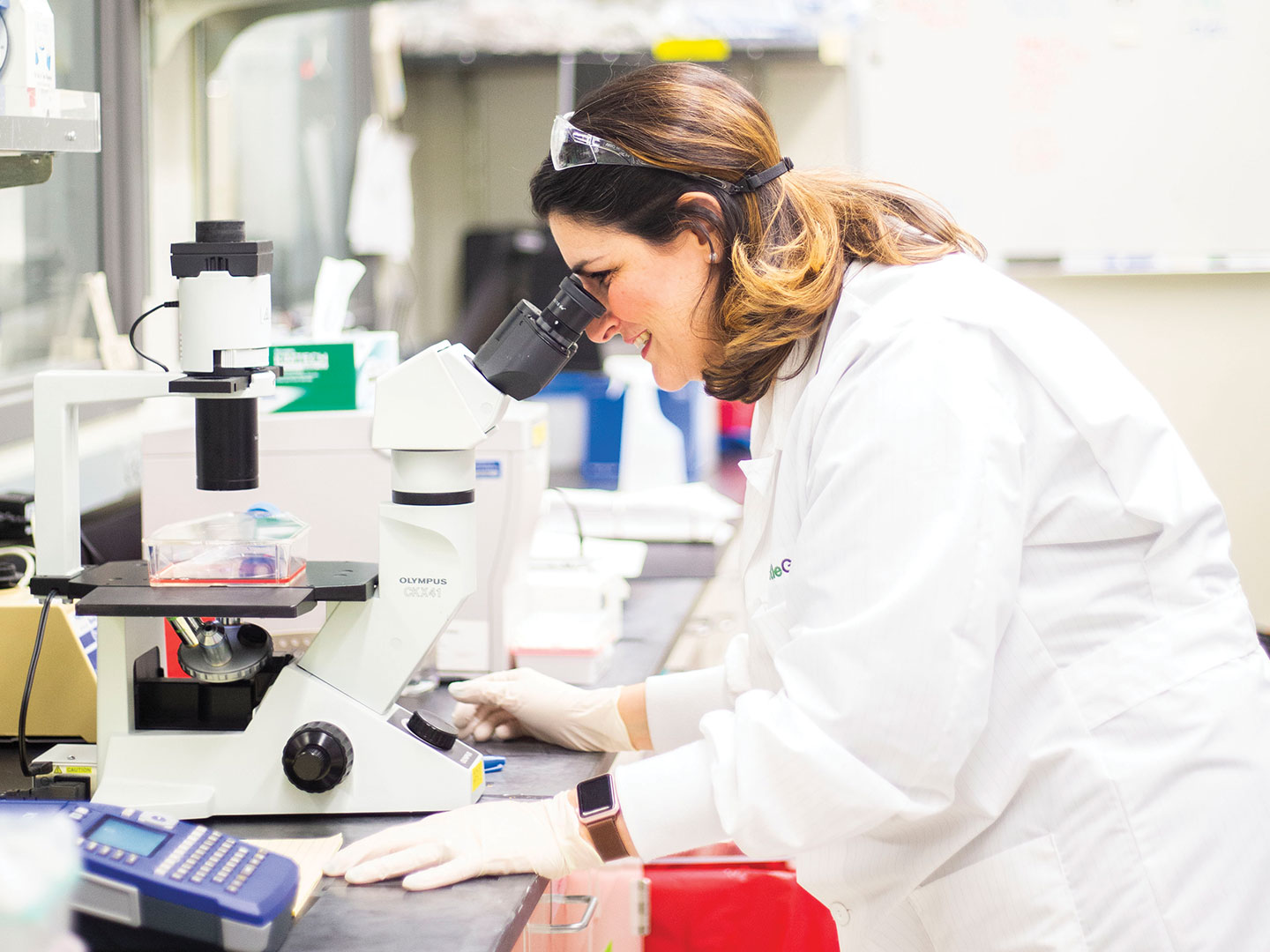
“I fell in love with understanding how cells divide on a molecular level,” Kulukian enthuses. “All of life depends on this single process: cell division. It’s beautiful! But my focus of interest is when that process goes wrong.”
She pursued her PhD in Molecular Biology at U.C. San Diego, publishing notable, highly cited cellular research and presenting results at national and international conferences. Kulukian then moved into post-doctoral research at some of the most prominent research centers and hospitals in the country; first returning
to Stanford, and then at Rockefeller University on a prestigious Jane Coffin Childs postdoctoral fellowship, and later at Memorial Sloan Kettering Cancer Center in New York, publishing and presenting numerous important papers and studies in her field. But while she continued to find her work compelling, after ten years in academic settings, Kulukian began to reconsider career options outside the expected track for a research scientist at her level.
“I began to wonder if I was still following a career path of my choosing, or if I was fulfilling external expectations. Despite my successes in academia, I questioned whether a professorship was the right path for me,” she recalls. “And then I had this personal epiphany: people are meant to go after what drives them, and they can course-correct until they get there.”
For Kulukian, that meant a shift from purely academic research to applied research; in a setting where she could leverage both her research experience along with her talent for aligning, motivating and leading teams. Seeking a biotech firm on the cutting edge of harnessing cellular technology which also aligned with her passion and commitment for transformative science that could impact lives, she found her current role.
In addition to sharing her extensive scientific knowledge, Kulukian relishes mentoring the younger members of her group, and modeling the determination and perseverance that are the hallmarks of her success.
“Scientists are not thought of this way often,” she explains, “But you have to have tremendous grit to do this work. You have to be into discovery for the long haul.”
She speaks with reverence about that essential paradox in the work of a molecular biologist: by studying the smallest cells and molecules, they can bring vast improvements to the wellbeing of all humankind. And while not minimizing the many environmental challenges facing the planet on the macro level, Kulukian shares a contagious optimism about the future, based on her own decades of study at the micro level.
“Knowledge is infinite. Ideas are infinite. There’s no limit to what we will know and develop, and we’re just getting started.”
Banner photo: Dr. Anita Kulukian in her lab at Seattle Genetics in Seattle, WA. Photo by Rachel Coward



